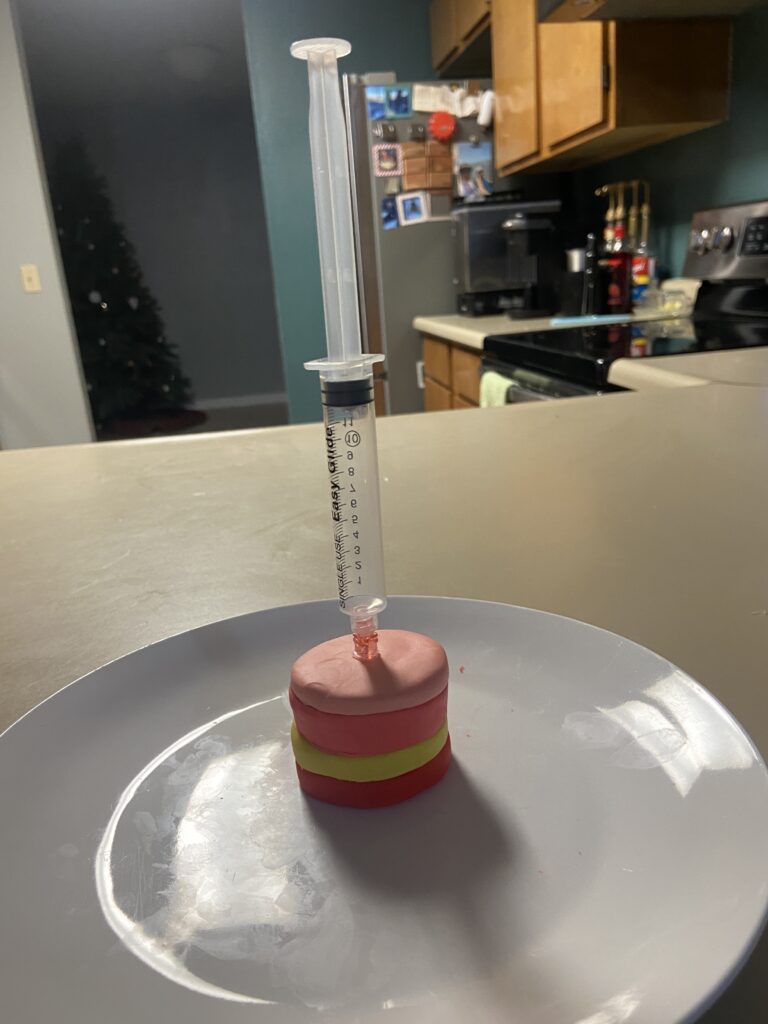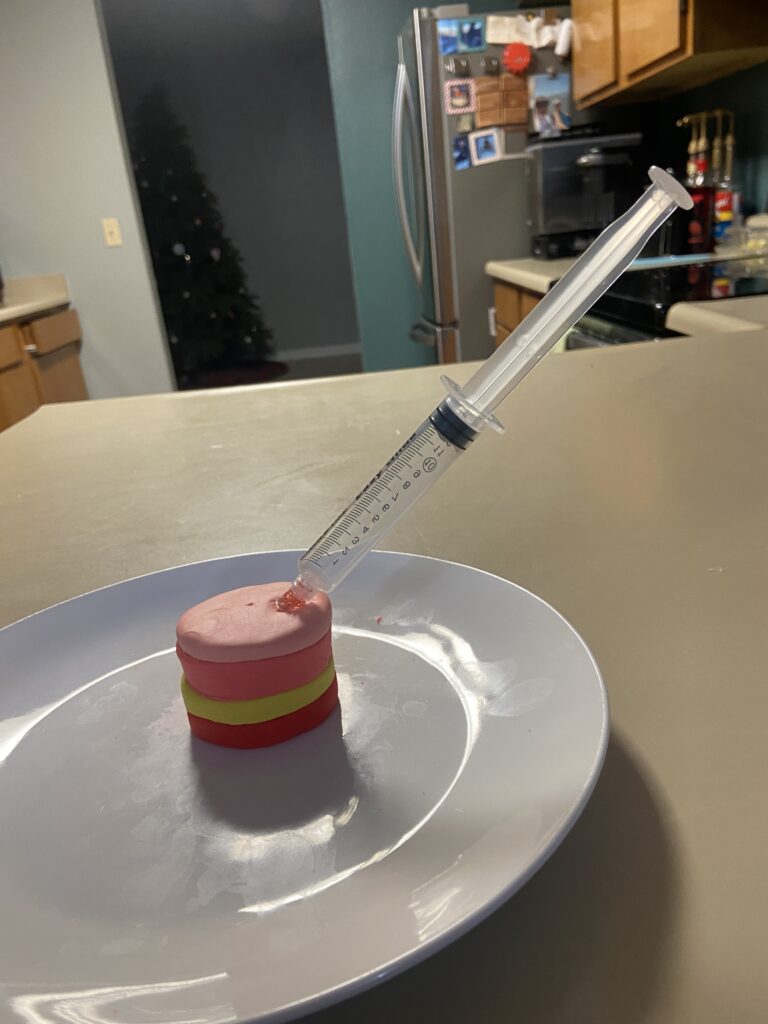

Medication Injections location and reasoning
My objective covered in this project was discussing the Medication injection sights, Intramuscular, subcutaneous, dermal injections for medication administration in the medical field. “Three layers of tissue make up the skin: Epidermis, the top layer, Dermis, the middle layer, Hypodermis, the bottom or fatty layer.”(Cleveland Clinic) 2022. The Epidermis is a protective layer of skin to prevent germs and bacteria from entering the bloodstream. The Dermis grows hair, contains elastin and collagen, makes oil and sweat. The hypodermis acts as a cushion to bones, has connective tissue, and helps regulate body temperature.
The different types of medication injections used in the medical field are Intramuscular and Subcutanious. IV medication administration is the fastest route of administration for all medications that have an IV route option. Out of the 3, IV, IM, or Subcutainous, IM injections enter the bloodstream faster than subcutaneous injections. To show the differences between the routes of administration, I will be using Epinepherine as the example drug. Epinepherine can be used for many different medical issues, Epinepherine can be used for anaphylaxis, it can be used for difficulty breathing, or it can even be used for cardiac arrest. For this example, I will be using epinephrine administration for anaphylaxis via the IM and Subcutanious route. Both the subcutaneous (SC) and the intramuscular (IM) routes of injection are recommended by experts, however, the SC route is often recommended exclusively, especially for “mild” reactions.(Simmons, 2001). According to the Fairbanks North Star Borough EMS standing orders, the onset of IM or subcutaneous epinephrine are both the same at 5-10 minutes, at the same dose of 0.3mg of 1:1000 concentration Epinephrine for both subcutaneous and Intramuscular. For Intramuscular injections, you should “Insert the needle at 90 ° stretching the skin, rather than bunching it, with a dart-like movement using your dominant hand.”(Chadwick, 2015). Subcutaneous injections require a slightly different technique. You are supposed to “lift skinfolds or to angle the needle 45°”(Strauss, 2019).
These are the different types of medication injections, how to perform them, and the amount of time it takes for the medication to onset. This project outlined the different layers of skin, the types of injections, and how to do them. For my project, playdough was used to represent the different layers of skin and the muscle layer. After that, the different angles of injection were pictured with an actual needle and injection into the playdough. This was to show the different layers and how the injections work.
Citiations
Clinic, C. (2022). Skin: Layers, structure and function. Cleveland Clinic. Retrieved November 21, 2022, from https://my.clevelandclinic.org/health/articles/10978-skin
Simmons , E. (2001). Epinephrine absorption in adults: Intramuscular versus subcutaneous injection. Retrieved November 21, 2022, from https://www.jacionline.org/article/S0091-6749(01)71625-9/fulltext
Chadwick, A., & Withnell, N. (2015). How to administer intramuscular injections. Nursing Standard (2014+), 30(8), 36. doi:https://doi.org/10.7748/ns.30.8.36.s45

Hunter did a fantastic job at displaying the different layers of skin tissue and how they work together. It was interesting to learn about the different injection sites and why we use them.
Hunter uses the drug Epinephrine as his example drug to show the insertion sites for intramuscular and subcutaneous injections. He also pointed out that Epinephrine is used in a variety of different medical situations, a nice fun fact. In his explanation, we learn how intramuscular injections are 90-degree insertions and that IM injections enter the bloodstream faster. This is different than injections done in the subcutaneous sites, requiring a 45-degree angle.
The use of playdough was a great visual for displaying the multiple layers and he even goes further to show how to administer the injections. It made understanding and clarifying which to use and why you would use that site much easier to comprehend.